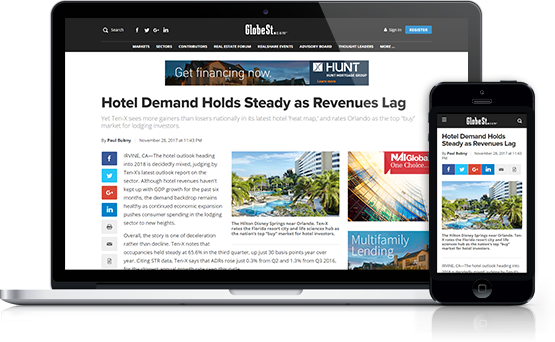There's been a lot written about green building – and with good reason. Sustainably built office buildings are not only a good business decision for developers – making properties more valuable and improving NOI due to reduced maintenance and energy costs – but they also have an enormous impact on the environment and climate change. Just as important, however, are the benefits realized by corporate tenants located within green buildings, as well as their employees.
Wellness is one of those benefits. In fact, wellness is deemed to be so important to the commercial real estate industry that in 2017, the Global Real Estate Sustainability Benchmark (GRESB), which evaluates real assets, including real estate portfolios on their sustainability policies and implementation and provides data to capital markets, launched a health and well-being module. The fact that GRESB – whose investor members represent over $18 trillion in institutional capital – now supports reporting for health and well-being to help investors manage risk is telling. Attracting capital for “green” projects is no longer viewed as strictly a selling point in satisfying an investor's corporate social responsibility checklist, but it's also a fiscally smart move.
This is especially true with project that have a strong commitment to health and wellness. From our investment perspective, buildings with certifications such as WELL, Fitwel and RESET are even more attractive, and here are three reasons why:
- They help building owners attract and retain high-quality tenants and maximize the financial performance of the building (through increased rental rates and resale value). They also improve shareholder relations by increasing GRESB scores for health and well-being. According to a study conducted by CBRE in 2018, wellness is now an essential part of a corporate real estate strategy, with 92% of companies surveyed showing a preference for wellness-capable buildings.
Corporate tenants today expect any Class A office building in a major market to be LEED-certified, and many corporations have policies about occupying space that is LEED-certified or otherwise green. Even the federal government has similar requirements. The Guiding Principles for Sustainable Federal Buildings – principles that federal projects are required to abide by – includes a section on occupant health and wellness that reads:
Recommended For You
Want to continue reading?
Become a Free ALM Digital Reader.
Once you are an ALM Digital Member, you’ll receive:
- Breaking commercial real estate news and analysis, on-site and via our newsletters and custom alerts
- Educational webcasts, white papers, and ebooks from industry thought leaders
- Critical coverage of the property casualty insurance and financial advisory markets on our other ALM sites, PropertyCasualty360 and ThinkAdvisor
Already have an account? Sign In Now
*May exclude premium content© 2025 ALM Global, LLC, All Rights Reserved. Request academic re-use from www.copyright.com. All other uses, submit a request to [email protected]. For more information visit Asset & Logo Licensing.








